 The process of determining the future of the San Gabriel Watershed region started in 2005 in a series of initial scoping sessions. In 2009 the first draft alternatives were presented for public comment, as we reported in 2009. After the 2009 series of public hearings, the alternatives were revised and released In October 2011.
The process of determining the future of the San Gabriel Watershed region started in 2005 in a series of initial scoping sessions. In 2009 the first draft alternatives were presented for public comment, as we reported in 2009. After the 2009 series of public hearings, the alternatives were revised and released In October 2011.
In October and November of 2011, the National Park Service (NPS) held another series of public meetings to discuss their preliminary study findings about the San Gabriel region, and present their revised draft alternatives. There were between 75 and 150 stakeholders at each meeting, a clear indication of how important the San Gabriel Mountains are to Southern California residents.
The report is an extensive 300 page document. It discusses a broad spectrum of the natural, cultural and recreational resources in the study area. For those interested in the geologic, cultural and natural history of the San Gabriels it is a handy reference, well worth reading. The document further describes the national significance of the resource, and ultimately finds the region suitable for NPS protection. It discusses the feasibility of NPS involvement, then presents the alternatives as to how the NPS may be involved.
As we reported in October, one of the original Alternatives, B, had been dropped, and one, D, added. The three remaining Alternatives, A, C and D were summarized and outlined by Barbara Butler, who is leading the study for the NPS. The presentations essentially recapped the Executive Summary. Members of the audience were then invited to ask questions.
Many of the questions were very specific, addressing the current shortfalls in maintenance, funding, staffing and infrastructure within the Angeles National Forest. People asked for more rangers to patrol for litterers and graffiti, funds for trail restoration and maintenance, more staff to handle volunteers and funding for recreation facilities.
Some were concerned that there may be an increase in bureaucracy and red tape if the NPS were to come in. The presenters again assured everyone present that all land use decisions would continue be made by the current land managers. They defined the NPS roles more as “Management Partners,” sharing resources with the Forest Service and other agencies, as well as facilitating better coordination and cooperation between agencies.
Others were worried that their particular interests–gold mining, off-highway vehicles, hunting, fishing, off-road cycling, to name a few–might be restricted or adversely affected under the proposed Alternatives. Again, existing use decisions and policies will not be changed by an NRA designation, we were assured.
People wanted to know why this particular area or that particular area were omitted from the proposal. In short, when Congress authorized the study, they authorized it for a very specific area. Alternative D includes some land that lies outside the study area, but only as much as needed to include an entire geographic or ecological feature. It doesn’t extend to the eastern boundaries of the current Angeles National Forest, something that several commenters called for. We agree that the contiguous areas of the Angeles National Forest should be included in the final recommendation.
There were also concerns about the costs involved and the reliability of funding in this tight economy. It was argued that if the cost of doing the study or the cost of running an NRA (estimated at $2 – 4 million per year) were just given to the Forest Service, they’d be better able to manage the forest. While this may be true in a perfect world, the Department of the Interior (NPS) and Department of Agriculture (Forest Service) are funded separately and for the Forest Service (FS) to get additional funds from the Interior Department would essentially require an NRA designation.
The vast majority of the attendees were in support of Alternative D. The San Gabriel Mountains Forever group, with whom IMBA was able to find a compromise that would keep a trail corridor out of a proposed new wilderness in the San Gabriel Mountains, were in strong attendance with a press kit, stickers for people to show their support of Alternative D, and printed sheets of talking points.
A small minority were in support of the “No Change” option, leaving things the way they are, fearing that additional management would lead to slowing of progress and other hindrances. Nobody at the public hearing we attended appeared to be supporting Alternatives A or C.
Comments can be submitted until December 16. After the comment period closes the current Alternatives will be further refined and distilled into a recommendation. The study team will then make a final report and recommendation, expected in Spring 2012. That recommendation will likely be some variant of the current Alternative D, which is the current “preferred” alternative by the study team, and apparently by the public.
From there it will pass through various reviews by the National Park Service and the Interior Department, who will add their comments to the report and recommendation. It will then pass through Congressional Committees before reaching Congress. The process could take several years. Only about 1 in 3 NPS Study Areas results in a congressional designation for a new NPS unit, so a recommendation is not a guarantee that anything will ultimately change.
When and if there is a designation by congress, we will have to stay involved in the process. Many of the concerns raised by attendees at the meetings were very specific, and too finely detailed and site-specific to fall within the scope of such a broad study. Those details will be hashed out in a General Management Plan, which will go through a similar process of study, public input and refinement before adoption. CORBA will closely monitor the development of a General Management Plan when and if the time comes.
Environmental Assessment
The National Environmental Protection Act requires federal agencies to identify the “environmentally preferred” alternative. Alternative D was found to be the environmentally preferred alternative in this case. It protects more resources over a larger area, it improves recreational facilities outside the National Forest, decreasing use pressure on the forest itself, and provides for expansion of wildlife corridors, over the other alternatives. The Environmental Assessment did not find any significant impacts of an NRA designation that would require a full EIR, however, any site-specific projects would still need to go through the NEPA process, which includes public involvement and comment.
CORBA supports Alternative D
CORBA supports the report findings. We agree that the area is a unique resource suitable for inclusion in the National Parks system. Conceptually, we support Alternative D for a number of reasons. It protects resources over the largest area, improves recreational opportunities, has the most positive socio-economic impact, and fosters a more cooperative management between the various land managers in the study area. It provides opportunities to expand and link wildlife and recreational corridors through urban areas. It provides resources to urban communities to expand and improve their open space and recreational opportunities.
To further refine the current Alternative D, CORBA would like to see language to:
- Honor and maintain existing trail-use designations and permitted activities within the ANF and other open spaces in the proposed NRA.
- State that if resource protection necessitates a recreational use or activity be discontinued, viable alternative locations for those uses or activities must be provided so as not to diminish already limited recreational resources.
- Ensure that if any additional land or resources are acquired by the NPS, they will be managed to multiple-use standards, and that multiple-use should be the goal for any newly proposed trails or recreation facility projects within the study area and/or NRA.
- Include a paragraph from Alternative A (page 173), which states: “This study recommends that the establishing legislation require specific additional funding to be allocated each year for recreation, planning, visitor services, wildlife management, and resource protection.” We strongly urge that this language be included in Alternative D.
- Assure that funding levels and sources for the Angeles National Forest be maintained or increased, without regard to additional funding for the region that may be received from the NPS and/or Department of the Interior.
- Have the final report include recommendations for alternative additional funding sources from both the public and private sectors, and specifically exclude any additional use fees beyond the current Adventure Pass (for National Forest lands).
- Ensure that funding for the portions of the Angeles National Forest which lie outside the study area and proposed NRA must not be reduced as a result of this proposal, but should be increased.
- Include all of the Angeles National Forest contiguous to the current draft Alternative D in the final recommendation for an NRA.
If the report and recommendation do eventually result in a NPS designation for a San Gabriel National Recreation Area, CORBA looks forward to continuing and extending our relationship with the National Park Service, the Forest Service, and other land managers within the region. We currently maintain a good working relationship with the Santa Monica Mountains National Recreation Area, and would welcome the additional resources an NPS designation will bring to the San Gabriel Mountains and River region.
Comments can be submitted until December 16 through the web site or by email or written letter.
The executive summary of the draft summary report is available here. The full report is available here. Questions that should be addressed in your comments are:
- Of the alternatives presented in the Draft San Gabriel Watershed and Mountains Special Resource Study, which do you prefer? Please explain why.
- Are there specific proposals or aspects of the alternatives that you feel are important to be included in the preferred alternative/recommendation for the San Gabriel Watershed and Mountains Special Resource Study?
- Do you have any suggestions for improving the proposed alternatives? If so, what are they?
- Do you have any other comments related to the draft study findings or the environmental assessment?
To comment on the document, there is a convenient form available at the NPS Park Planning web site at http://parkplanning.nps.gov/document.cfm?documentID=43639. You can also mail a letter to:
National Park Service
San Gabriel Watershed and Mountains SRS
Park Planning
333 Bush Street, Suite 500
San Francisco, CA 94104
Or email:
We encourage everyone to voice their feelings about the proposal. If there are issues that we have not covered or that have not been raised, let the NPS study team know, and feel free to send us a copy or post your thoughts in the comments below.
Tags: Angeles national Forest, national park service, National Recreation Area, San Gabriel Mountains, San Gabriel Watershed


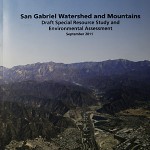
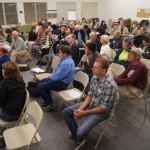
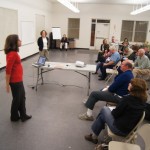
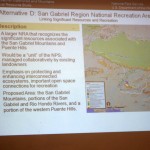
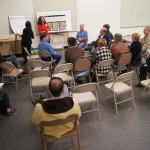



Comment Period Extended to January 9, 2012.
The NPS is extending the public comment period for the Draft San Gabriel Watershed and Mountains Special Resource Study and Environmental Assessment to January 9, 2012.